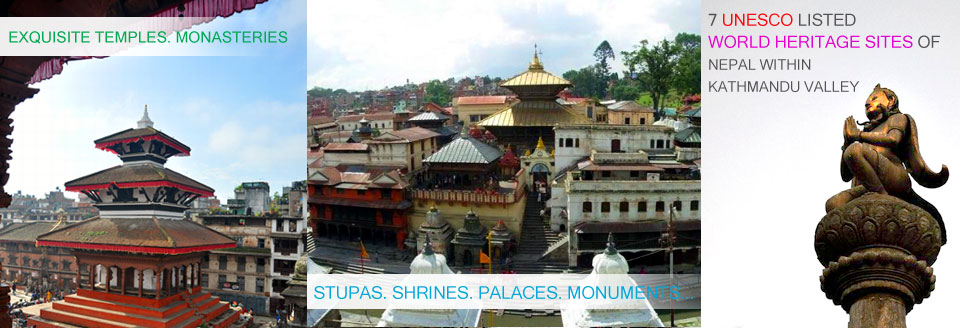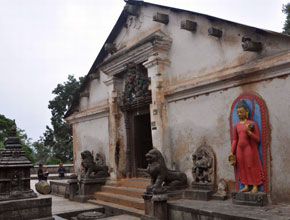










SWAYAMBHUNATH
The history of the Valley, according to the legends, begins with Swayambhu, or the "the self-existent". In times uncharted by history, Bodhisattva Manjusri came across a beautiful lake during his travel. He saw a lotus that emitted brilliant light at the lake's center, so he cut a gorge in a southern hill and drained the waters to worship the lotus. Men settled on the bed of the lake and called it the Kathmandu Valley. From then on, the hilltop of the Self-existent Lord has been a holy place.
Swayambhu's light was covered in time because few could bear its intensity. By the thirteenth century, after many layers were added to the original structure that enveloped the Lord's power, a dome-like shape had been acquired. The stupas central mast was damaged and replaced at that time. Peripheral sources of power were discovered on the hilltop as well and stupas, temples, and rest houses were built to honour them. Images of important deities, both Buddhist and Hindu, were also installed. Today, age-old statues and shrines dot the stupa complex.
Behind the hilltop is a temple dedicated to Manjusri of Saraswati - the goddess of learning.Swayambhu is, perhaps, the best place to observe the religious harmony in Nepal. The stupa is among the most ancient in this part of the world, and its worshippers are diverse from Newar nuns, Tibetan monks, and Brahmin priests to lay Buddhists and Hindus. The largest image of the Sakyamuni Buddha in Nepal is in a monastery next to the stupa. Other monasteries here have huge prayer wheels, fine Buddhist paintings, and special butter lamps which may be lit after presenting monetary offerings.
Swayambhu is a major landmark of the Valley and looks like a beacon below the Nagarjun hill. It provides an excellent view of the Kathmandu Valley. Devotees have climbed the steps on the eastern side for centuries. Statues of the Buddha, mini stupas, monasteries and monkeys make the climb to Swayambhu - which is fairly steep -worthwhile. But for someone who is physically disabled or is pressed for time, the western road allows you to get off your transport almost at the base of the stupa.
Some important monuments to see in this area:
> The huge gold plated Vajra ‘thunderbolt’ set in the east side of the stupa.
> Buddha statue on the west side of Swoyambhu.
> The sleeping Buddha.
> The temple dedicated to Harati, the goddess of all children. It is said that she was an ogress before Lord Buddha converted her to be the caretaker of all children.
> The Dewa Dharma Monastery, noted for a bronze icon of Buddha and traditional Tibetan paintings.














